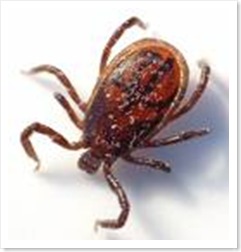An Israeli company Mitam has developed a chemical-free, environmentally safe anti-tick spray that is safe for pets and farm animals. Based on 15 years of research at the Volcani Institute in Israel, Mitam's biological solution takes advantage of the fact that ticks do have natural enemies. One in particular is a naturally occurring fungus called Metarhizium anisopliae, which latches onto and consumes the protein exoskeleton of the tick, causing death.
Normally present in nature or in a cowshed in small amounts, Mitam has found a way to amplify the fungus's potency and supply it food, while it waits for a tick to jump into an animals' fur.
"It eats the tick, and there is no egg laying. This is one of our main achievements," Mitam's CEO Tzali Cnaani. What also makes it a plus for farmers and pet owners is that Mitam's spray can be applied either to the animal's habitat on the farm or at home, as well as on the animal directly.
No resistance and kid-safe
Competitive in price with similar, but harmful, chemicals such as Frontline, Mitam is now working with the US Food and Drug Administration and the Environmental Protection Agency (EPA) in the US to prepare for commercial sales expected to start in 2010.
The solution is believed to be effective on a number of ectoparasites that penetrate the outer body of an animal, although the scientific evidence is not yet available, says Cnaani. For now the company of six, based in Katzrin in the Golan Heights and founded in 2003, is focusing on ticks that attack companion and domestic animals such as cows, horses, sheep, goats - and cats and dogs.
One problem with existing methods of tick control, according to Cnaani, is that the materials are poisonous and harm the environment. "The dog is close to the kids and it rubs off," he says.
In addition, he explains: "The ticks develop resistance to it, and eventually it becomes less and less effective. There is room for a solution that is environmentally friendly. We are using something natural."
Proven efficacy in the greenhouse
The fungus being bred by the company has already been shown to be a sound biological control solution in the agriculture business, and is used to keep pests off greenhouse-grown berries.
In the cattle business, beef farmers especially are actively seeking new solutions to save their livestock from cattle tick fever, which leads to anemia and even death in some cases. There are 1.3 billion head of cattle in the world, says Cnaani, and according to experts the overall damage from cattle tick fever is enormous, at $7 billion a year worldwide.
"There is a high cost of treatment, and loss of production," notes Cnaani, pointing out that the EPA is actively seeking new environmental solutions in this direction.




No comments:
Post a Comment